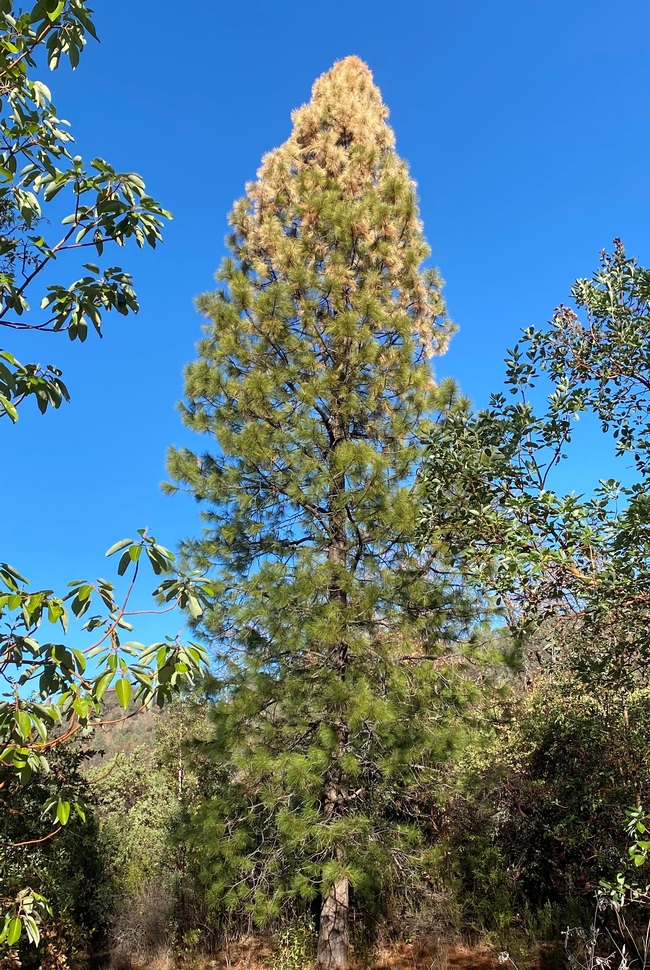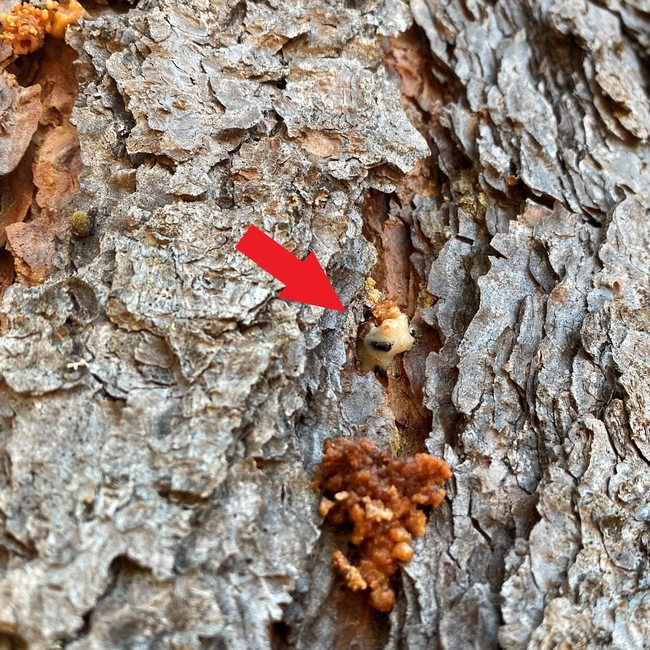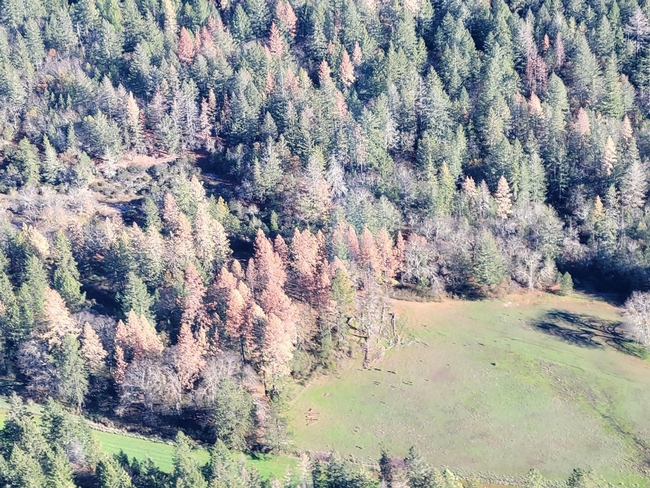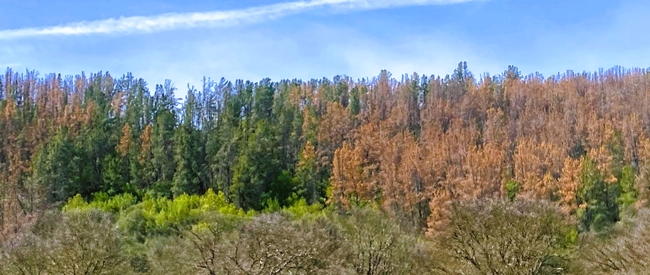I have been monitoring conifer mortality in Mendocino, Lake, Napa, and Sonoma Counties for the past year. Based on my observations and review of aerial detection surveys conducted by CAL FIRE Forest Health Specialists, the region is currently experiencing significant conifer mortality due to an outbreak of several native bark beetle species. Primary conifers impacted (and associated bark beetles) include ponderosa pine (western pine beetle), Douglas-fir (flatheaded fir borer and Douglas-fir engraver), Grey pine and knobcone pine (Ips species).
These outbreaks likely originated in areas with an abundance of fire-stressed conifers, which provided ideal host material for bark beetle populations to establish and grow. Persistent drought conditions then helped their populations spread out of burned areas as water stressed trees with reduced vigor became more susceptible to bark beetle attacks.
The outbreak is well-established at this point and will likely continue to expand. Lake County is currently experiencing particularly extensive conifer mortality, but other counties can expect tree mortality to continue and potentially increase over the next few years. This summer will likely be a significant period of conifer decline and mortality. As bark beetle populations continue to grow, it is possible relatively healthy conifers may become susceptible to bark beetle attacks, due to a behavior called “mass attack”, in which bark beetles collectively attack trees to overwhelm their defenses.
The outbreak will likely run its course until bark beetle populations run out of host material, favorable weather conditions return, or other natural control factors such as predators and competitors help reduce bark beetle populations.
Management

In forest stands that have experienced significant tree mortality from bark beetle outbreaks, planting non-host species that are suitable for the site or more drought tolerant species (such as oaks) in marginal sites, can help make the forest more resilient to future disturbances.
It is important to remember the insects involved in the current outbreak are native species that help maintain forest health. They are usually secondary pests that cull dead and dying trees from the forest to make space for regeneration, recycle nutrients back into the system, and create diverse forest structure. Insects are also important sources of food for wildlife (the woodpeckers will be doing well in outbreak areas!) and help create snags that become valuable wildlife habitats.
While short-term management goals can focus on managing insect populations to protect some trees and slow the spread of outbreaks, some tree mortality is inevitable and forest pests will always be present in a forest system. So, long-term management goals should focus on forest stewardship that creates healthy and sustainable forest conditions that are resilient to disturbance. Manage for the forest, not for the pest.
Financial Assistance
Unfortunately, there are few financial opportunities to help manage dead and dying trees due to forest pest outbreaks. If impacted trees are of merchantable size, there are several CAL FIRE Emergency Exemptions (e.g., 10% Dead, Dying, & Diseased Exemption) that can be used to help remove dead and dying conifers. Consult with a Registered Professional Forester (RPF) to learn more about this option. There are several cost-share incentive programs that will help with forest health and management; however, these programs are competitive and often take a while to implement, so they may not be appropriate for emergency situations. But, they are excellent programs that can help landowners develop and implement forestland stewardship.
CAL FIRE, CA Forest Improvement Program (CFIP)
Natural Resources Conservation Service, Environmental Quality Incentives Program (EQIP)
North Bay Forest Improvement Program
I would also suggest contacting the Resource Conservation District (RCD) to see if they have or know of any programs that might help manage hazard trees.
Resources
For a more detailed exploration of bark beetle management, I recommend checking out the following resources:
CAL FIRE Summary of Helicopter Overflight of Parts of Lake and Napa County
Bark Beetle Outbreaks & Conifer Mortality in the North Coast Region
Tree Mortality in Northern California: Questions and Answers
UC ANR Mass Tree Mortality, Fuels, and Fire: A Guide for Sierra Nevada Forest Landowners
US Forest Service Bark Beetles in California Conifers: Are your trees susceptible?
US Forest Service FIDL – western pine beetle
US Forest Service western pine beetle management guidelines
US Forest Service pine Ips species management
California Forest Pest Council
US Forest Service - Forest Health Protection
More information about forest health issues in northern coastal forests can be found on the UCCE Mendocino - Forest Health web page. More information on forest management can be found on the UCCE Mendocino - Forest Resources web page.

